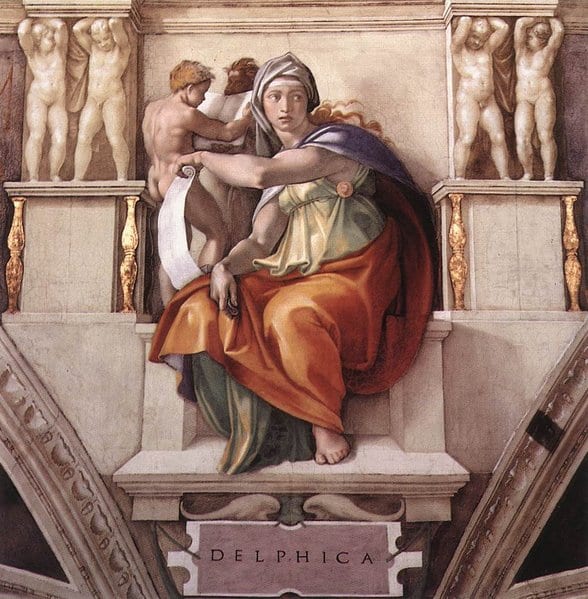Trending Now
The famous artwork that defines the Sistine Chapel has drawn tourists and landed on travel bucket lists since, well, probably since Michelangelo and his crew (including one Sandra Botticelli) completed work in 1481. They created the whole thing in less than 5 years, and it has stood the test of time, both architecturally and artistically.
But whether you’ve visited or not, there’s a good chance you’ve missed at least some of these facts about the famous Vatican City monument.
12. There was a special scaffolding built in order to allow for the height of the ceilings.
Michelangelo himself designed the vertical scaffolding, which attached to beams on the walls of the chapel, allowing him to work over the entire surface of the ceiling while also letting people to move about on the chapel floor. In fact, services went on during the painting – though the people below wouldn’t have been able to see the master’s work until after the scaffolding was removed.
11. Adult Jesus is not depicted.
None of the ceiling murals feature an adult Jesus, and the reason for that is that the scenes are all from the Old Testament, when the Christ only appears as a figure to come in the future.
He is depicted as a young man in the altar mural The Judgement Day.
10. Michelangelo didn’t paint the ceiling lying down.
You might have an image in your mind of the artist lying on his back, paint dripping in his face, but in reality he stood and craned his neck back. The process earned Michelangelo ear infections, arthritis, and scoliosis that he lived with for the rest of his life.
9. Some of the symbolism only made sense at the time.

Image Credit: Wikimedia Commons
The oak leaves and acorns, for example, are a reference to the family crest of Pope Julius II – the pope at the time.
8. Michelangelo was one of the first people to imagine the face of God.

Image Credit: Wikimedia Commons
The famous image of God in The Creation of Adam was the first in history to depict the deity in motion – he was typically seen as a symbol (like a hand alone).
7. Not all of the images are Christian.

Image Credit: Wikimedia Commons
Along with the 7 prophets of Israel, some of the side pictures are of 5 of the 10 Sibyls – oracles of Ancient Greece who were believed to be able to predict the future.
6. It contains the lineage of Jesus – or most of it.
The lunettes (the space under the arches above the windows) feature the ancestors of Jesus, though 2 were removed to make room for the entire Last Judgement mural.
5. There’s a lot of debate surrounding the images of God.
Some people believe that the silhouette of fabric around God resembles the human brain, and that the people crowding God symbolize the different parts of the brain.
Others argue that the clothing represents the womb, with the green scarf meant to be the severed umbilical cord, and that the entire image is meant to show how Adam was “born” (and explains his belly button in the process).
4. Michelangelo didn’t create the ceilings alone.

Image Credit: Wikimedia Commons
Data collected during the restoration undertaken between 1980-1994 revealed that at least 3 other people helped draw the putti (boys common in the Renaissance period) and different architectural parts.
3. There are some issues with the scenes depicting Adam and Eve.

Image Credit: Wikimedia Commons
The Bible does not specify what kind of fruit Adam and Eve ate, but the tree in The Expulsion from Paradise mural is a fig tree. Also, it’s interesting to note that Adam and Eve are frowning and unhappy before they try the apple and beautiful and inspired after they disobey God, leaving one to wonder as to Michelangelo’s thoughts on Christian dogma.
Not so subtle? The fact that the serpent is drawn as a woman.
2. There might be a self-portrait inside the Judgement Day rendering.

Image Credit: Wikimedia Commons
It is said that Michelangelo drew his own portrait in the skin held by Bartholomew because he was suffering at the hands of the church – he didn’t want to paint the murals at all.
Most experts deny this assessment.
1. The artists used a technique known as “fool-the-eye.”
The technique is more commonly known as Trompe-l’œil, and when used it causes murals to give the impression that the stories are separated by architectural elements like pilasters, edges, and ledges that are in fact, pseudo-3D images painted onto a flat surface.
These just make me want to visit even more!






